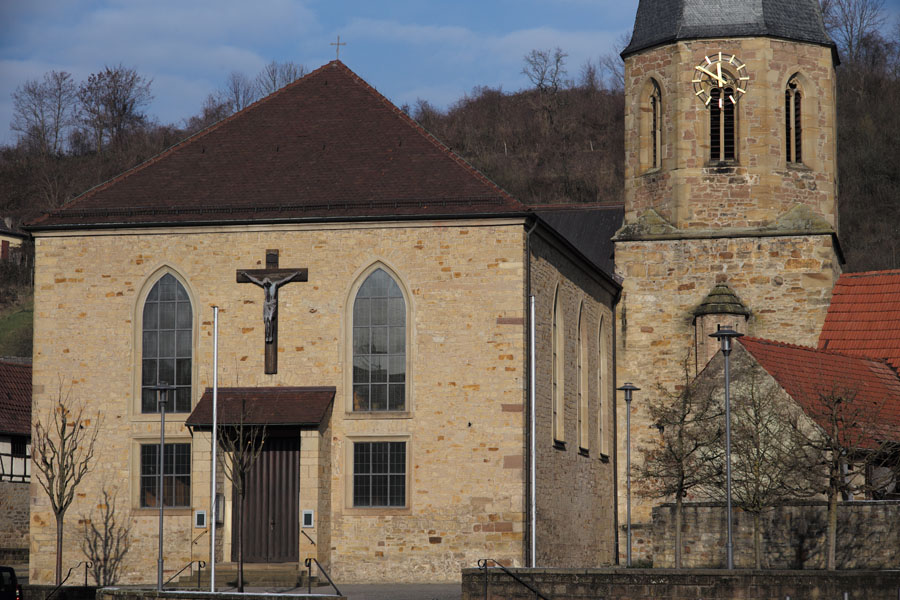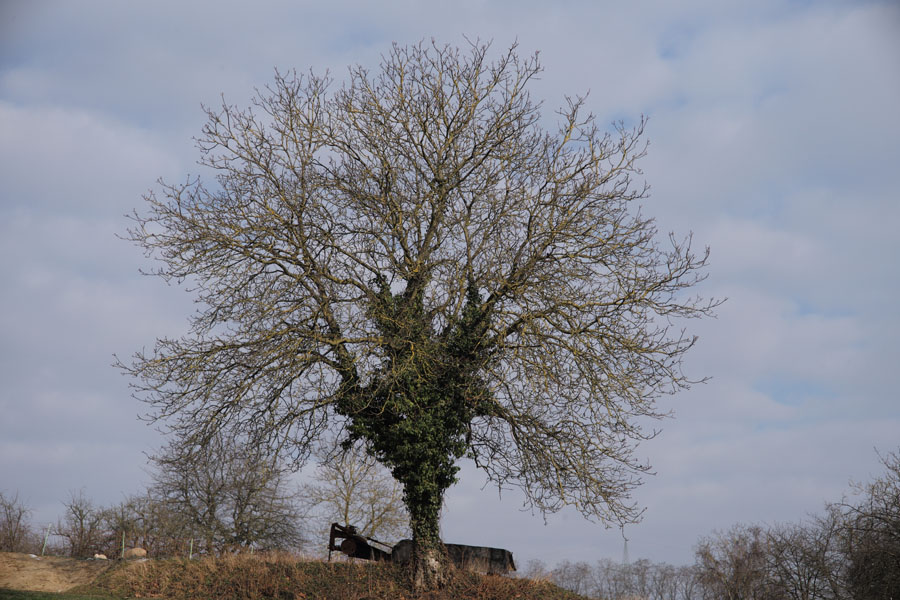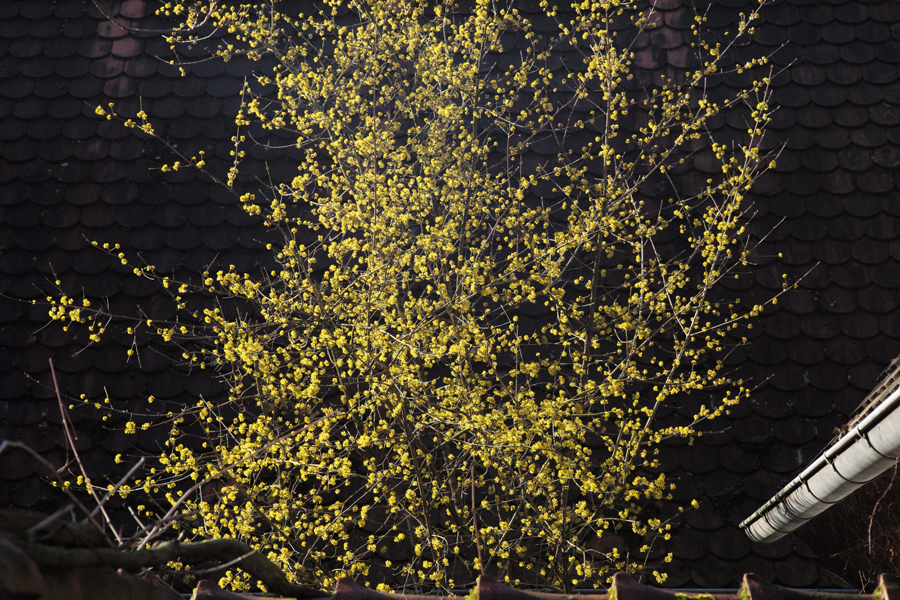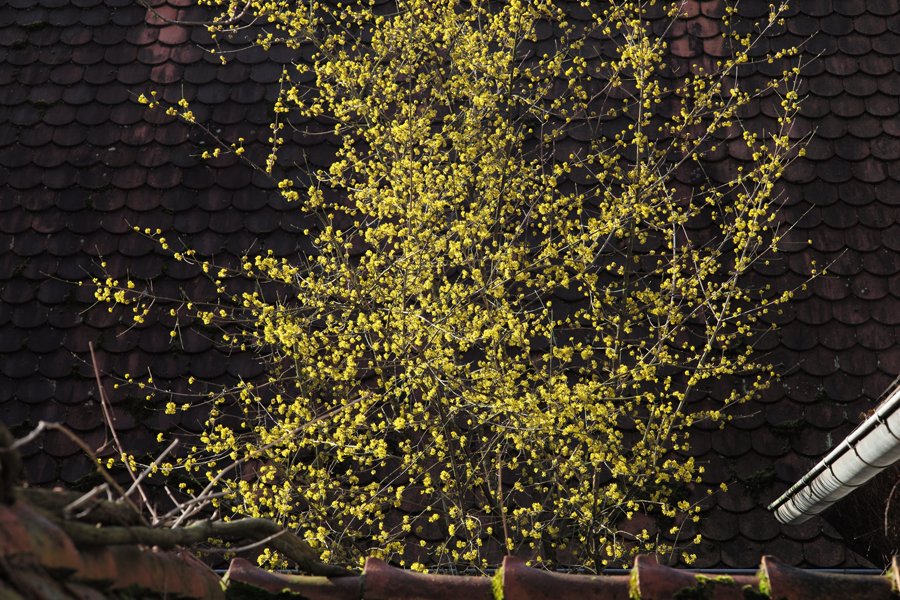Leica M (Typ 240): Leitz Tele-Elmarit-M 90mm f/2.8 versus Elmar-C 90mm f/4
My Leitz 90mm M-Mount Lenses | Body with Lens Attached | Some Technical Data | Sample Images | Conclusions | Links
Archive
| Note: In November 2020, I sold my Leitz Tele-Elmarit-M 90mm f/2.8 lens (I still own the Leitz Elmar-C 90mm f/4 lens). I am therefore no longer able to update this page or to answer questions about this lens. |
On these pages you can find my first personal experiences with the lenses at the Leica M (Typ 240) and more. This page is devoted to the Leitz Tele-Elmarit-M 90mm f/2.8 and the Leitz Elmar-C 90mm f/4 lenses, which have the same focal length and are very similar - and are therefore compared here.
All lens pages: Voigtländer 15mm f/4.5 | Voigtländer 15mm f/4.5 III | Zeiss Biogon 21mm f/4.5 | Leica Elmarit-M 21mm f/2.8 ASPH. | Leica Elmar-M 24mm f/3.8 ASPH. | Voigtländer 25mm f/4 (M39) | Minolta M-Rokkor 28mm f/2.8 | Zeiss Biogon 35mm f/2.8 | Zeiss Sonnar 50mm f/1.5 | Voigtländer 75mm f/2.5 (M39) | Leitz Elmar-C 90mm f/4 | Leitz Tele-Elmarit-M 90mm f/2.8 | Leitz Tele-Elmar 135mm f/4
See also: Leitz Elmar-C 90mm f/4 - Leitz Tele-Elmarit-M 90mm f/2.8
My Leitz 90mm M-Mount Lenses
I bought the Leitz Tele-Elmarit-M in February 2016 via the l-camera-forum for 490 EUR (product number 11800; serial number 2587227 > built by Leitz Canada in 1973; but "production era" was between 1974 and 1986). It was my first (and, at the moment, only) lens that I bought after I had purchased the Leica M (Typ 240).
The Leitz Elmar-C, which I auctioned at ebay for a little more than 170 EUR (2642706 > built in 1973; source: Olypedia: Leica CL and Leica Wiki), was originally dedicated to the Leica CL. The Leica CL was manufactured for Leitz by Minolta in the 1970s (production era: 1972/3-1977; Version 11540). Minolta also sold its own, improved version of this camera, the Minolta CLE, after Leitz had discontinued the CL. I read that the Elmar-C was the only Japanese lens that was manufactured in Germany.
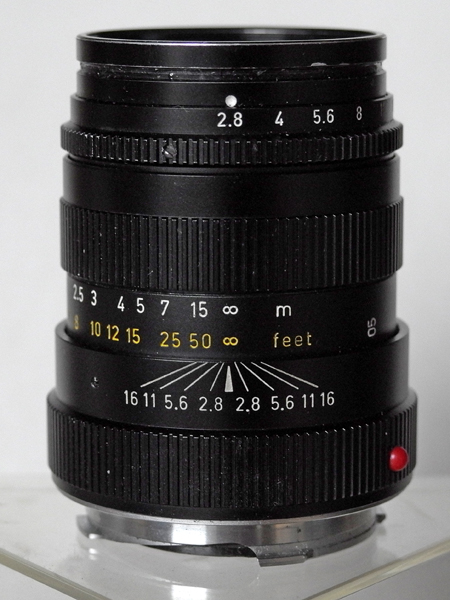 |
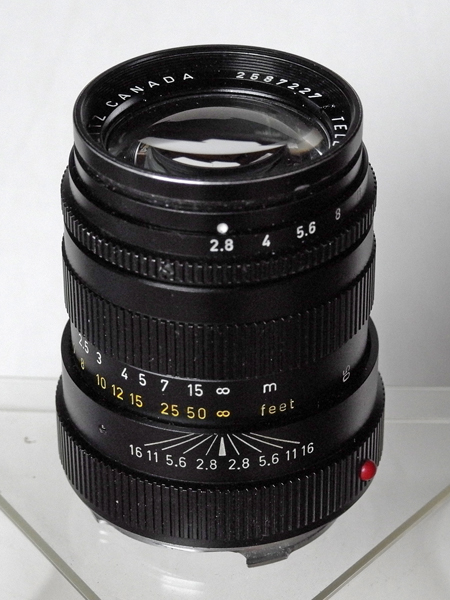 |
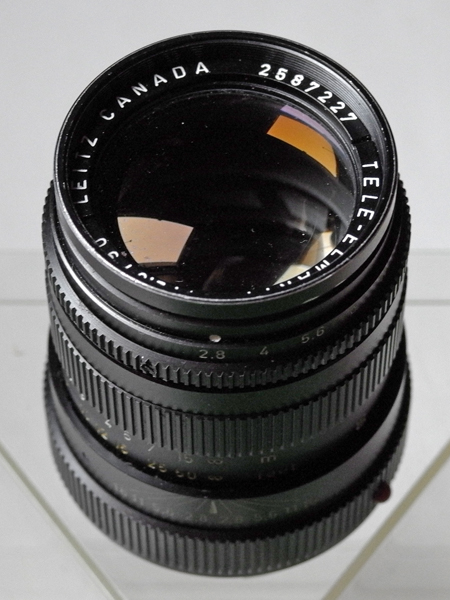 |
||
 |
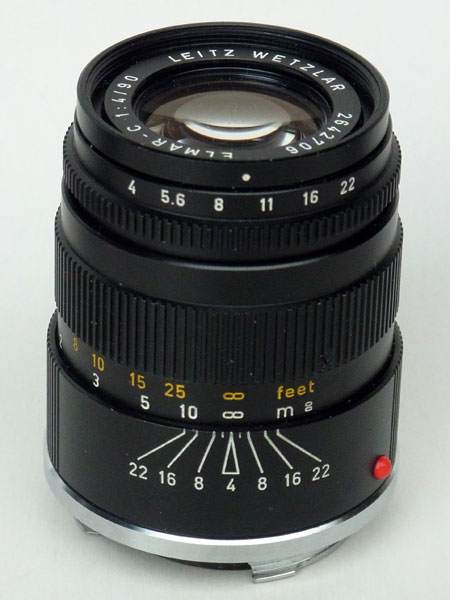 |
 |
Figures: Leitz Tele-Elmarit-M 90mm f/2.8 lens (top row) - Leitz Elmar-C 90mm f/4 lens for comparison (bottom row)
More Comparison Photos
 |
 |
|
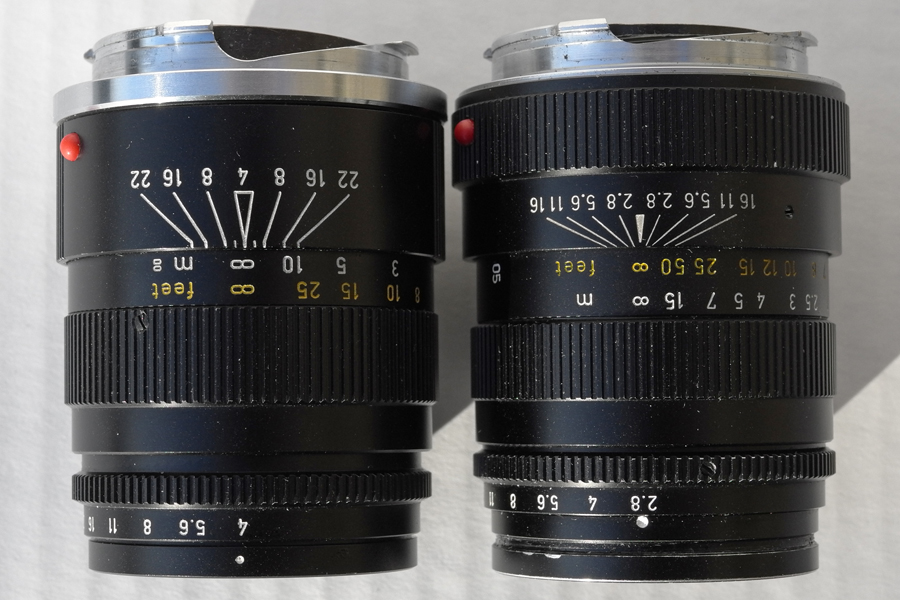 |
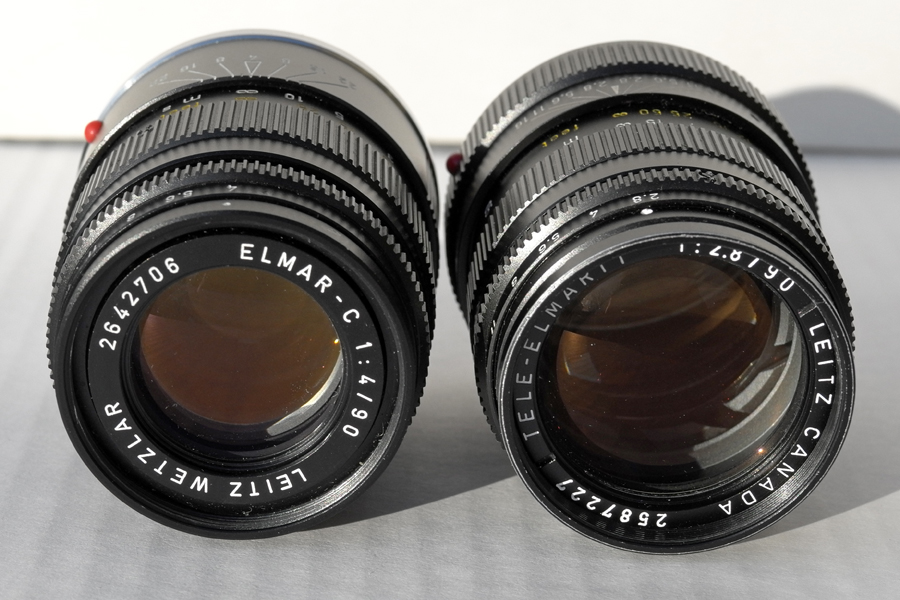 |
Body with Lens Attached
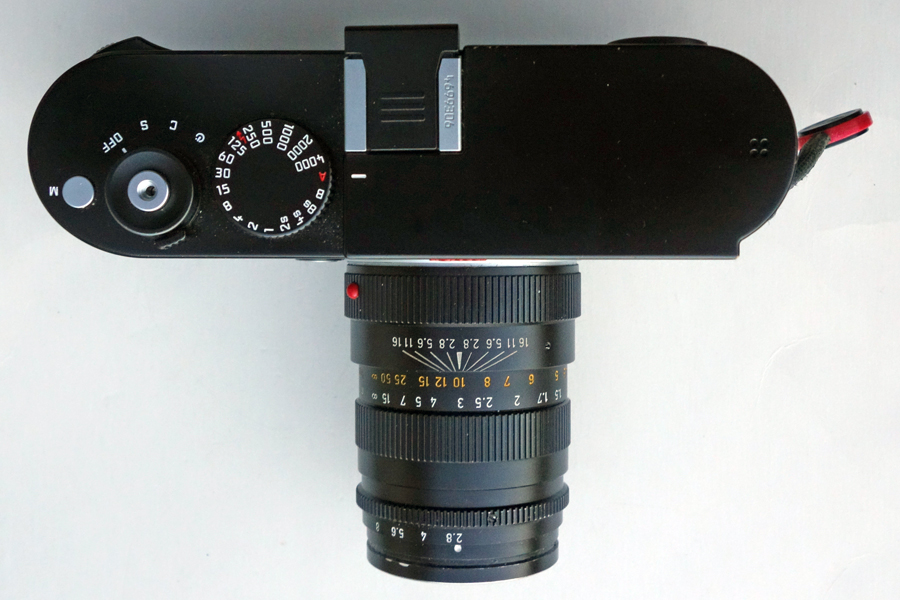 |
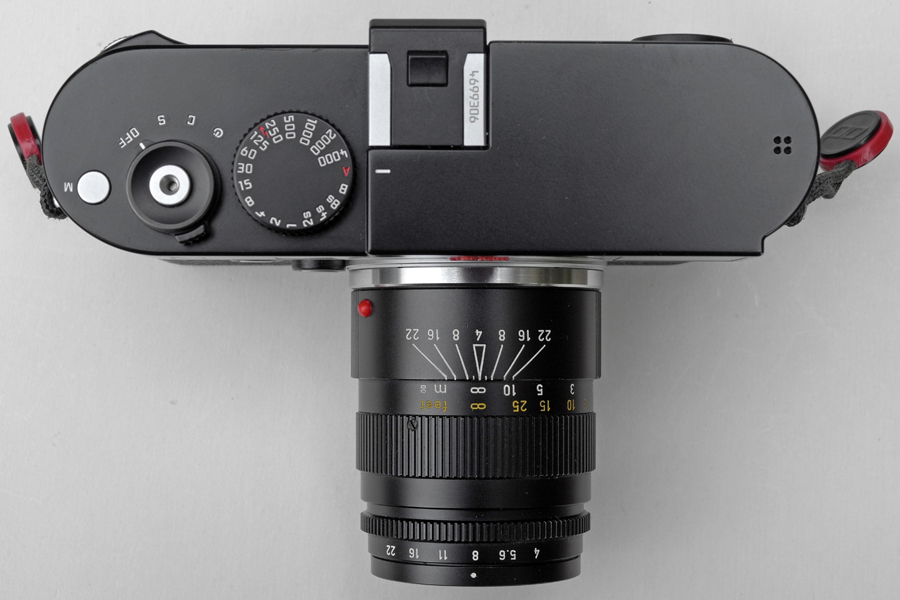 |
Photos: Leica M (Typ 240) with Leitz Tele-Elmarit-M 90mm f/2.8 lens (left) and with Leitz Elmar-C 90mm f/4 lens (right) for comparison
Some Technical Data
| Data | Leitz Tele-Elmarit-M 90mm f/2.8 | Leitz Elmar-C 90mm f/4 |
| Model number | 11800 | 11540 |
| Focal length | 90 mm (05 as correction, unclear what this amounts to...) | 90 mm |
| Angle of view (35mm film) | 27° diagonal | 27° diagonal |
| Maximum aperture | 2.8 | 4 |
| f-stop range | 2.8-16 | 4-22 |
| Number of iris blades | 10 | 10 |
| Number of lenses/groups | 4/4 | 4/4 |
| Shortest distance | 1.0 m | 1.0 m |
| Weight | 225.8 g (Ken Rockwell) (210 g on our own scales) | 246/270 g (210 g on our own scales) |
| Length | 61.3 mm at infinity, 67.92 mm overall (Ken Rockwell)) | 60 mm (61 mm) |
| Maximum diameter | 51 mm | 51 mm |
| Filter thread | 39 mm filters (E39) | 39 mm - 5.5 type; do not use 39 mm filters - may cause damage! |
| Lens hood | folding rubber hood (11250) with its own pop-in cap (11252), screw mount; the lens was supplied with this hood, but mine came with a metal lens hood 12575, which can also be used (I can use the rubber hood from my Elmar-C) | folding rubber hood (11250) with its own pop-in cap (11252), screw mount; the lens was supplied with this hood |
| Smallest object field / magnification | 1:9 (Ken Rockwell), 372 x 248 mm / 1:10.4 (calculated), 300 mm / 1:8.4 (from photo) | 330 x 220 mm (Olypedia); 372 x 248 mm / 1:10.4 (calculated); 300 x 200 mm / 1:8.4 (from photo) |
Lens Hoods
Both lenses can use the screw-in folding rubber hood (11250) with its own pop-in cap (11252). The hood has a special 5.5 type filter thread that cannot take 39 mm filters.
The Tele-Elmarit M 90mm f/2.8 can also use the metal lens hood 12575, which can also be used with the Tele Elmar 135mm/f4.
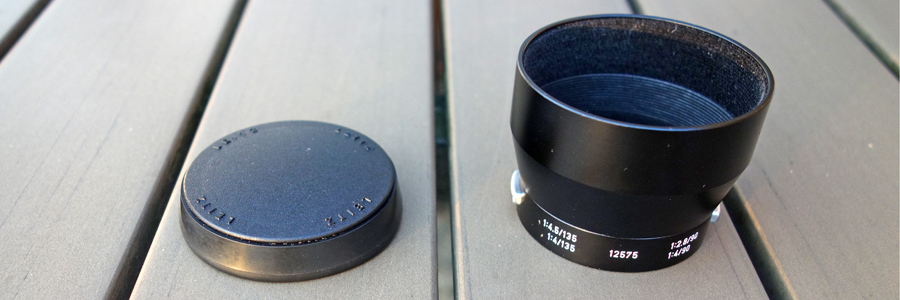 |
Metal lens hood 12575 to the right on all photos | |
|
|
|
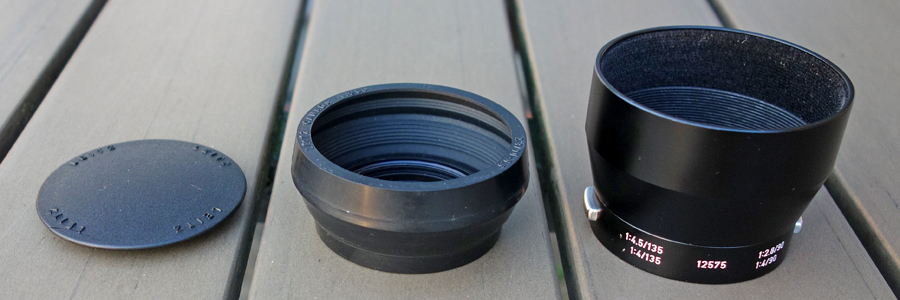 |
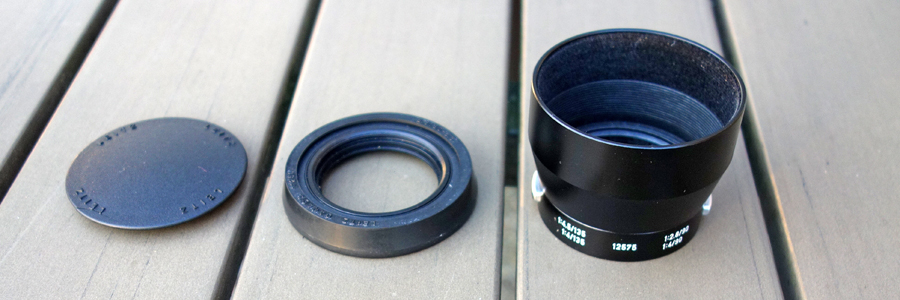 |
|
 |
 |
Sample Images
Closest Distance
 |
 |
|
Leitz Tele-Elmarit-M 90mm f/2.8 |
Leitz Elmar-C 90mm f/4 |
|
 |
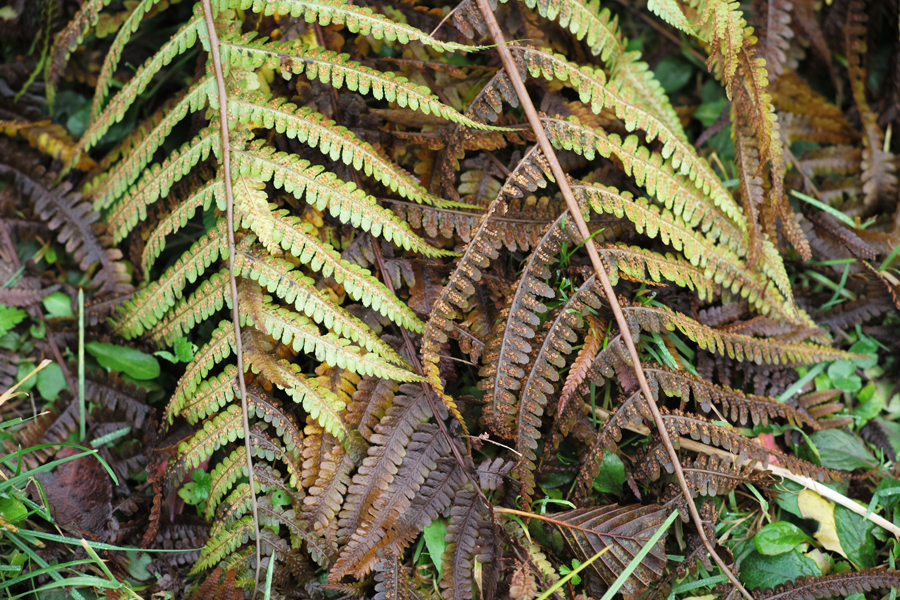 |
|
Leitz Tele-Elmarit-M 90mm f/2.8 |
Leitz Elmar-C 90mm f/4 |
Similar Places, Different Times
Same Places, Same Time
Conclusions
Disclaimer: I am not a lens expert who sees marked differences between various Leica and/or other lenses. I can check for soft corners, find differences in color rendition, and, in rare cases, may discover a "3D look", but that's all. Please regard therefore my conclusions as the verdict of a "layman".
At the moment, it is too early for comparing these lenses with respect to their image quality thoroughly.
First tests seem to reveal that the cheaper Elmar-C is sharper in the image corners and at the edges. It is also far less prone to flare issues. Thus, the only plus points for the Elmarit-M are for me, at the moment, its maximum opening of f/2.8 (where it has a shallower depth of field, but is also much fuzzier in the corners), its lower vignetting that I found in test shots, and its slightly lower weight (on paper only...).
Note that in November 2020, I sold my Elmarit-M and am therefore no longer able to answer questions about this lens.
Links
- LEICA 90mm f/2.8 Lenses (at Ken Rockwell ): www.kenrockwell.com/leica/90mm-lenses.htm
- Leitz Tele-Elmarit-M 90mm f/2.8 (Ken Rockwell "Leica Lens Reviews"): www.kenrockwell.com/leica/90mm-f28-tele.htm
- 90mm f/2.8 Leitz Tele-Elmarit-M (Leica Wiki): www.l-camera-forum.com/leica-wiki.en/index.php/90mm_f/2.8_Tele-Elmarit-M
- The Leica 90 tele-elmarit review. A fine vintage for a good price (Joeri van der Kloet): joerivanderkloet.com/the-leica-90-tele-elmarit-review-a-fine-vintage-for-a-good-price/
- Leitz Elmar-C 90mm f/4 at Ken Rockwell "Leica Lens Reviews" (scroll to the lens): www.kenrockwell.com/leica/lens-reviews.htm#90
- 90mm f/4 Elmar-C (Leica Wiki): www.l-camera-forum.com/leica-wiki.en/index.php/90mm_f/4_Elmar-C
- Olypedia: Leica CL (German): olypedia.de/Leica_CL#Leitz_Elmar-C_1:4.2F90_mm
| 04.07.2024 |

